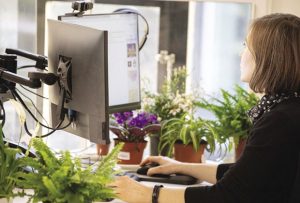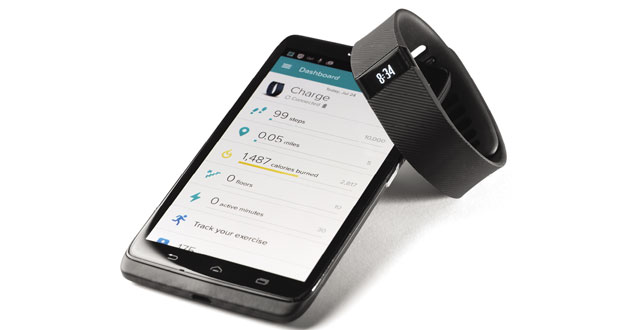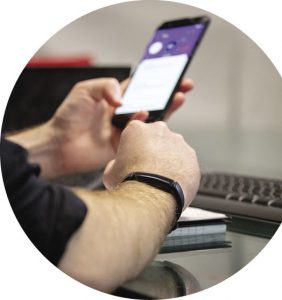PLP Architecture Partners Ron Bakker, Midori Ainoura and Bernard Storch, and PLP Labs team lead Alex Davidson describe the results of an innovative pilot study into the use of wearables at work
The wearables market is expanding rapidly, as is the range of health conditions they can inform us about. Heartbeat patterns, sleep quality, stress via skin conductance and brain waves are all measurable. They could also provide more of an evidence-based approach to post-occupancy evaluation (POE) in the future, according to research published by the British Council for Offices (BCO) on the role that wearable technology can play in workers’ health and wellbeing.
‘Use of Wearables in the Office: A review and examples in practice’ was authored by Derek Clements-Croome Emeritus Professor in Architectural Engineering Research at the School of the Built Environment at the University of Reading, Joyce Chan-Schoof, an Architect and a PhD Researcher at the Design School of Loughborough University and the project team from PLP Labs – the research and innovation arm of PLP Architecture. It reveals that wearables have the power to alter the employee experience into one that is healthier and ultimately more productive.
To support research into the potential future uses of wearables in the workplace, the authors conducted a pilot study involving six volunteers from PLP Architecture’s staff, to help establish a methodology for undertaking an occupant health and wellbeing assessment in a real-world scenario. The participants from PLP’s staff each spent a week working in a different scenario, including a biophilic space, a cubicle-like environment, an open plan office and their home-working setup.
The pilot study is meant as a first exploration into how these technologies, and other supporting data-gathering methods, can be used in the office, and aims to establish:
- What types and combinations of equipment would be most effective and practical for a real-world occupant health and wellbeing assessment?
- What supplementary data-gathering methods would be required to collect data that the wearables are not able to, such as subjective experiences?
- What types of data would need to be collected, and what would be the best way to collect these specific metrics?
- How should the data collected be analysed to draw out meaningful results on the health and wellbeing of occupants in a specific office, and how could these results be fitted into existing frameworks on health and wellbeing?
The pilot study used a fitness wrist band, posture monitor, and then supplemented this with an indoor environmental quality sensor. There are a wide range of different brands that you could use for this, with numerous options based on your budget. Importantly, they need to measure key vitals including continuous heart rate, resting heart rate, breathing rate and activity. Another useful metric that Fitbit provides is an analysis of the wearer’s sleep, measuring both the duration and quality. These tools were supplemented by a questionnaire to record the qualitative aspects of the participants’ experiences, light and sound meter apps, and a sketching exercise.
By measuring each of the participants’ vital signs with wearables (a Fitbit and an Upright Go 2 posture sensor) the team was able to gauge the wellness qualities of each space based on measurements of the human body, rather than those of the space itself. This gave an intimate and individualised look at how the spaces affected the person in them. By taking this approach, the research team was able to avoid generalisations and grouping people by demographics.
Everyone is unique and responds to environments differently, so to get a true understanding of health in the office we believe one must examine each person individually, and wearables can help us to do that.
WORK PATTERNS
The pilot study focused on assessing the ability of wearables to monitor people’s physiological responses to particular work environments. To help clearly identify what was influencing the test subjects throughout the day, the team worked with a narrow range of variables, focusing on environmental and personal ones and avoiding variations in work patterns where possible. Having said that, a subjective questionnaire did allow participants to record any extra activity. They ultimately wanted to understand how a person can use these wearables to decide for themselves how to use different spaces for different activities based on their unique physiological response. For this it is less important to look at the role within the company, and more to look at the types of daily activity they undertake – meetings, desk work, being creative, focusing or whatever the day holds.
 It’s also important to note that the national lockdown hit midway through the planning for this study and as such it became immediately clear that it would need to be incorporated into the study to enable us to accurately create a representation of how they work in the future.
It’s also important to note that the national lockdown hit midway through the planning for this study and as such it became immediately clear that it would need to be incorporated into the study to enable us to accurately create a representation of how they work in the future.
Of course, everyone’s home tends to be very different and much less standardised from an office environment. To keep measuring consistent across scenarios, the team chose five key variables to focus on when crafting each scenario, including biophilia, views out, interaction, lighting and ventilation. Added to this, when completing the daily questionnaire, participants in the home-working scenario had extra questions that were created to enable an accurate comparison of their environments with the those in the office.






